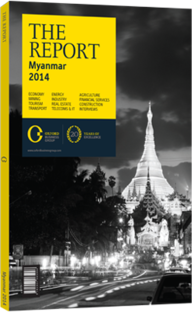Designated areas: Special economic zones have the potential to boost investment
However, the Foreign Investment Law passed in 2012 has a similar package of incentives, which apply to any foreign investment in Myanmar, thereby effectively nullifying some of the advantages of locating in an SEZ.
Zone By Zone
Dawei SEZ, which was originally backed by Italian-Thai Development (ITD) and the Myanmar Port Authority, has an estimated project cost of $8.6bn, is set to cover 196 sq km, and will include a deep-sea port. In March 2013, however, citing a lack of sufficient progress and the size of the project, the governments of Myanmar and Thailand announced the withdrawal of ITD and instead established a special purpose vehicle to manage the project. Construction is now being split into different components, which will then be tendered to private firms (including ITD) for development.
The China-funded Kyaukpyu SEZ will be home to the terminus of a large oil and gas pipeline that stretches to Yunnan Province in southern China, providing the landlocked province with access to oil and gas shipped from Africa and the Middle East. Although an important strategic plan for Myanmar’s northern neighbour, the town and surrounding area of Rakhine State have been the focus of renewed Muslim/Buddhist conflict, heightening the risk for investors to develop the zone further.
In the planning stage since 2001, the passing of the SEZ law in 2011 breathed new life into the Thilawa zone. Its location, only 20 km from Yangon, the country’s largest and most commercial city, ensures that the site has easy access to both the business services and abundant population that the city provides. Committed funding by Japanese low-interest loans make the site perhaps the most likely to succeed in the coming years. Major Japanese corporations, including Mitsubishi, Marubeni and Sumitomo, are conducting feasibility studies on the zone, alongside pledged support from Japan International Cooperation Agency. The current plan is for the site to be up and running by 2015, although much work still needs to be done. In 1962, Myanmar was the richest country in Southeast Asia. Today, it is the poorest. Over the past 50 years, almost all areas of Myanmar’s industrial output have been stifled due to harsh international trade sanctions and an authoritarian government intent on preserving its power. Only since 2011 has this truly begun to change, and the once booming industries are set to re-emerge. With a young labour force, a strategic geographic position and rich reserves of natural resources, investors are already taking notice.
Addressing Concerns
A number of special economic zones (SEZ) have been planned for the coming years, in order to help expedite infrastructure development and entice foreign companies to set up factories in the country. However, despite the cooperation and support of various international partners, there continue to be delays and lingering doubts about the projects’ progress. Whether these plans can become a reality will help determine the future success of Myanmar’s industrial expansion. Current plans include three major SEZs that aim to alleviate some of the infrastructure issues in Myanmar and attract investment in industrial development. “Capacity is a huge issue, especially in regards to port facilities. This puts a restriction on the trade side of business and limits options. Relieving the bottleneck needs to be dealt with, and not simply by shifting the problem to another bottleneck,” Lim Yew Hoe, former managing director of Myanmar Brewery, told OBG.
Legal Changes
In January 2011, a new SEZ law triggered the planning of three SEZs to be developed along the coast of Myanmar, named and known after their locations: Dawei, Thilawa and Kyaukpyu. The new law provides a number of incentives for global businesses interested in locating their next factory in one of the SEZs, for example, one-stop service centres for investors; foreign bank remittances; a maximum 75-year land lease; and a 100% tax exemption on overseas sales for the first five years of operation, with a 50% exemption for the following five years.
You have reached the limit of premium articles you can view for free.
Choose from the options below to purchase print or digital editions of our Reports. You can also purchase a website subscription giving you unlimited access to all of our Reports online for 12 months.
If you have already purchased this Report or have a website subscription, please login to continue.

